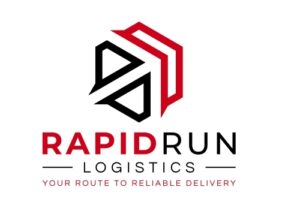Other names used for this equation are balance sheet equation and fundamental or basic accounting equation. Income and expenses relate to the entity’s financial reasons companies have subsidiaries performance. Individual transactions which result in income and expenses being recorded will ultimately result in a profit or loss for the period.
Assets in the Accounting Equation
Economic entities are any organization or business in the financial world.
Real-World Examples of the Expanded Accounting Equation
We calculate the expanded accounting equation using 2021 financial statements for this example. Balance Sheets shown above and the Income Statement and detailed Statement of Stockholder’s Equity in this section. The concept of expanded accounting equation is that it shows further detail on where the owner’s equity comes from. In this case, the owner’s equity will be replaced with the elements that make it up. In this case, the total assets and owner’s equity increased $5,000 while total liabilities are still the same. Assets in accounting are resources that a company owns and uses to generate income and future economic benefits.
- If a company’s stock is publicly traded, earnings per share must appear on the face of the income statement.
- The balance of the total assets after considering all of the above transactions amounts to $36,450.
- Refer to the chart of accounts illustrated in the previous section.
- The net assets part of this equation is comprised of unrestricted and restricted net assets.
Shareholders’ Equity
The additional amount above par is reported in an account called additional paid-in capital or share premium. Using Apple’s 2023 earnings report, we can find all the information we need for the accounting equation. However, equity can also be thought of as investments into the company either by founders, owners, public shareholders, or by customers buying products leading to higher revenue. A T-account is a visual representation of the general ledger, whereas the general ledger is an accounting record that shows more detailed information than a T-account. Accountants and bookkeepers use the T-account to analyze transactions and spot errors easily without going through detailed ledger information.
Accounting Equation Formula
Companies compute the accounting equation from their balance sheet. They prove that the financial statements balance and the double-entry accounting system works. The company’s assets are equal to the sum of its liabilities and equity. The balance sheet is a more detailed reflection of the accounting equation.
Classification of Assets and Liabilities
Transaction #3 results in an increase in one asset (Service Equipment) and a decrease in another asset (Cash). After the company formation, Speakers, Inc. needs to buy some equipment for installing speakers, so it purchases $20,000 of installation equipment from a manufacturer for cash. In this case, Speakers, Inc. uses its cash to buy another asset, so the asset account is decreased from the disbursement of cash and increased by the addition of installation equipment.
Free Resources
Finally, a corporation is a very common entity form, with its ownership interest being represented by divisible units of ownership called shares of stock. Corporate shares are easily transferable, with the current holder(s) of the stock being the owners. Earnings give rise to increases in retained earnings, while dividends (and losses) cause decreases.
The accounting equation is the foundation of a bookkeeping system. It’s the compass that guides all accountants and bookkeepers, even if transactions get complex. For small businesses, knowing how the accounting equation works can help you better understand financial statements, along with how bookkeepers do their jobs.
The accounting method under which revenues are recognized on the income statement when they are earned (rather than when the cash is received). Let us imagine a business is set up and enters into a series of transactions over the first period. All transactions are recorded by the accounting system and used to produce an income statement, balance sheet and cash flow statement. The basic formula of accounting equation formula is assets equal to liabilities plus owner’s equity.
Share repurchases are called treasury stock if the shares are not retired. Treasury stock transactions and cancellations are recorded in retained earnings and paid-in-capital. Its concept is also to express the relationship of the balance sheet items which are assets, liabilities, and owner’s equity. As we have seen in the example above, the $50,000 of cash which the owner injects into business becomes the assets of $50,00.
As a core concept in modern accounting, this provides the basis for keeping a company’s books balanced across a given accounting cycle. Contributed capital and dividends show the effect of transactions with the stockholders. The difference between the revenue and profit generated and expenses and losses incurred reflects the effect of net income (NI) on stockholders’ equity.
Accounts payable include all goods and services billed to the company by suppliers that have not yet been paid. Accrued liabilities are for goods and services that have been provided to the company, but for which no supplier invoice has yet been received. At first glance, you probably don’t see a big difference from the basic accounting equation.
Additionally, the equation formula may also be broken down further on the capital part to detail the additional contributions of the capital. In this case, the capital will become the beginning capital and additional https://www.business-accounting.net/ contributions. For example, ABC Co. started the company on 02 January 2020 by injecting cash into the business of $50,000. The $30,000 came from its owner and $20,000 came from the borrowing from the bank.
